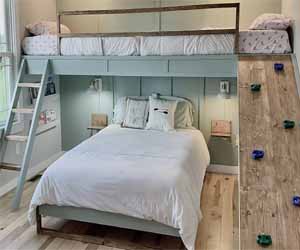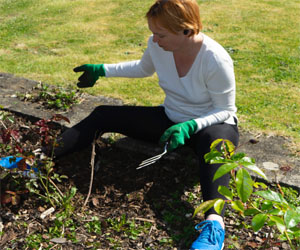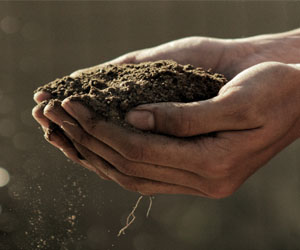


Ensuring Safe And Sustainable Water Supply

Rainwater, often considered pure and free from pollutants, can be an excellent source of water for various non-potable applications. However, to make it suitable for consumption and other essential uses, effective rainwater treatment is crucial. This process involves a series of steps to remove impurities, pathogens, and contaminants, ensuring that rainwater is safe and sustainable for various applications.
The Importance Of Rainwater Treatment
Rainwater is naturally soft and low in mineral content, making it an appealing alternative water source. In areas where access to clean, safe drinking water is limited, treating rainwater can provide a reliable supply. Additionally, rainwater treatment supports sustainable water management practices by reducing the burden on traditional water sources.
The Rainwater Treatment Process
Filtration: The first step in rainwater treatment is filtration. This process involves the removal of physical impurities such as leaves, twigs, and debris. Mesh screens and sediment filters are commonly used for this purpose.
Storage: Rainwater is often collected in storage tanks or cisterns. Proper storage is essential to prevent the growth of algae and the contamination of the water by external factors.
Settling: Allowing the collected rainwater to settle can help separate fine particles and sediments that may have passed through the filtration process. This is especially important for improving water quality.
Chemical Treatment: To disinfect rainwater and eliminate pathogens, chemical treatments are employed. Chlorine or ultraviolet (UV) light can effectively kill bacteria and viruses, ensuring safe water for drinking and household use.
Carbon Filtration: Activated carbon filters can be used to remove organic compounds, odors, and residual chemicals from rainwater, enhancing its taste and quality.
Reverse Osmosis: For potable water, reverse osmosis systems can be used to further purify rainwater by removing dissolved minerals, heavy metals, and other contaminants.
Applications Of Treated Rainwater
Drinking Water: When appropriately treated, rainwater can be a safe and reliable source of drinking water in areas with limited access to clean water.
Irrigation: Treated rainwater is ideal for garden and landscape irrigation, reducing the demand on potable water sources.
Toilet Flushing: Rainwater can be used for flushing toilets, reducing water consumption in residential and commercial buildings.
Laundry And Cleaning: Treated rainwater is suitable for laundry, cleaning, and other non-potable household uses.
Challenges And Considerations
Rainwater treatment requires careful planning and maintenance to ensure its effectiveness. Factors such as the quality of the catchment surface, the frequency of rainwater treatment, and the design of the treatment system can impact the quality of the water produced. In addition, regular monitoring and testing are necessary to ensure that the treated rainwater meets safety standards.
Rainwater treatment is a critical step in harnessing the benefits of this valuable resource. By properly treating rainwater, we can ensure its safety and suitability for various applications, including drinking water. As water scarcity becomes a more pressing concern, embracing rainwater treatment is not only environmentally responsible but also a step toward securing a sustainable and reliable water supply.
Making The Most Of Your Compact Living
 The Benefits Of Small Space Living
The Benefits Of Small Space Living
Before delving into the intricacies of small space planning, it's essential to understand the advantages of choosing a compact living arrangement.
Simplicity: Small homes encourage a minimalist lifestyle, reducing clutter and allowing you to focus on what truly matters.
Eco-Friendly: Smaller homes typically have a smaller environmental impact, as they consume fewer resources for heating, cooling, and maintenance.
Cost-Effective: Compact spaces are generally more affordable, both in terms of initial purchase or rent and ongoing utility costs.
Less Maintenance: With less square footage, there's less space to clean and maintain, freeing up your time for other pursuits.
The Key To Small Space Success: Planning
Small space planning is an art, and it involves thoughtful consideration of every square inch. Here are some crucial factors to keep in mind when planning for your compact living space:
Multi-Functional Furniture: Invest in furniture that serves multiple purposes. For example, a sofa that doubles as a guest bed or a dining table with storage space can help maximize your limited square footage.
Vertical Storage: Make use of vertical space for storage. Wall-mounted shelves, hooks, and cabinets can help keep your belongings organized without encroaching on your floor space.


The Heart Of Gardening Success
 2. Soil Care: Healthy soil is the foundation of strong, vibrant plants. Regularly assess the quality of your garden soil and amend it as needed. Composting, mulching, and using organic matter can improve soil fertility and structure. Understanding your soil's pH and nutrient levels will also help you select plants that are well-suited to your garden's conditions.
2. Soil Care: Healthy soil is the foundation of strong, vibrant plants. Regularly assess the quality of your garden soil and amend it as needed. Composting, mulching, and using organic matter can improve soil fertility and structure. Understanding your soil's pH and nutrient levels will also help you select plants that are well-suited to your garden's conditions.
3. Pruning And Deadheading: Pruning and deadheading are essential maintenance tasks that promote plant health and aesthetic appeal. Pruning involves trimming back overgrown or damaged branches, which encourages new growth and prevents disease. Deadheading is the removal of spent flowers to stimulate further blooms and keep the plant looking tidy.
4. Pest And Disease Management: Keep an eye out for common pests and diseases in your garden. Early detection and appropriate action are essential for preventing infestations. Consider using natural pest control methods to minimize the use of chemicals, which can harm beneficial insects and pollinators.
5. Fertilizing: Plants need nutrients to thrive, and fertilizing can provide a boost when your garden soil is lacking. Select a balanced, slow-release fertilizer and follow the recommended application rates. Over-fertilization can be harmful, so always adhere to the instructions on the product.
6. Mulching: Mulching is a beneficial practice that conserves moisture, suppresses weeds, and regulates soil temperature. Apply a layer of organic mulch around your plants to help maintain soil moisture and prevent temperature extremes.
7. Support And Staking: Tall or heavy plants often require support to prevent them from bending or breaking. Use stakes, cages, or trellises to prop up plants that might otherwise become too top-heavy.
A Cleaner, Safer, And Happier Living Space
 Improved Indoor Air Quality: Traditional cleaning products often release volatile organic compounds (VOCs) that can lead to poor indoor air quality. These can cause respiratory problems, allergies, and other health issues.
Improved Indoor Air Quality: Traditional cleaning products often release volatile organic compounds (VOCs) that can lead to poor indoor air quality. These can cause respiratory problems, allergies, and other health issues.
Allergen Reduction: Effective cleaning methods can help reduce allergens like dust mites, pet dander, and pollen, which can trigger allergies and asthma.
Prevention Of Mold And Mildew: Regular cleaning can help prevent the growth of mold and mildew, which can lead to respiratory problems and other health concerns.
Safer Living Environment: Cleaning without harsh chemicals reduces the risk of skin irritations, chemical exposure, and other health risks associated with chemical cleaning products.
Methods For Achieving Healthy Home Cleaning
Choose Natural And Non-Toxic Cleaners: Opt for natural cleaning solutions or non-toxic cleaning products that are free from harsh chemicals. Vinegar, baking soda, and lemon juice are great natural alternatives for many cleaning tasks.
Regular Cleaning: Establish a consistent cleaning routine to prevent the buildup of dirt, dust, and allergens. Regular dusting and vacuuming can go a long way in maintaining a clean and healthy home.
Ventilation: Ensure proper ventilation during and after cleaning to disperse any airborne particles. Open windows and doors to let fresh air circulate.
Reduce Clutter: A clutter-free home is easier to clean and reduces hiding spots for dust and allergens.






Opportunities And Challenges For A Changing World
 The world's population has been steadily increasing for centuries, driven by a combination of factors, including increased life expectancy, reduced mortality rates, and, in some regions, high fertility rates. While the global population growth rate has been slowing down, it remains a significant concern due to its implications on resources, infrastructure, and quality of life.
The world's population has been steadily increasing for centuries, driven by a combination of factors, including increased life expectancy, reduced mortality rates, and, in some regions, high fertility rates. While the global population growth rate has been slowing down, it remains a significant concern due to its implications on resources, infrastructure, and quality of life.
One of the challenges associated with rapid population growth is the strain it places on resources. As the number of people on the planet increases, so does the demand for essentials like food, water, energy, and housing. This growing demand can lead to resource scarcity, environmental degradation, and increased competition for limited resources.
Moreover, population growth often has economic implications. While a growing population can contribute to a larger labor force, which can be a source of economic growth, it can also lead to unemployment and underemployment if job opportunities do not keep pace with the increase in the labor force. Balancing economic growth with the needs of a growing population is a delicate challenge for governments and policymakers.
Urbanization is closely linked to population growth. As more people move to cities in search of better opportunities, urban areas experience increased pressure on housing, transportation, and social services.
Exploring The Benefits Of Solar Energy
 4. Increased Property Value
4. Increased Property Value
Homes and commercial properties equipped with solar panels often see an increase in their market value. Solar panels are viewed as attractive assets, and many potential buyers are willing to pay a premium for a property with solar installations.
5. Government Incentives
Many governments worldwide offer incentives, tax credits, and rebates to encourage the adoption of solar energy. These financial perks can make solar installations more accessible and affordable for homeowners and businesses.
6. Low Operating Costs
Once installed, solar panels have minimal operating and maintenance costs. Regular cleaning and occasional inspections are usually all that's needed to keep the system running efficiently. This low-maintenance feature makes solar energy a cost-effective long-term investment.
7. Job Creation
The solar energy industry is a significant source of job opportunities. The installation, maintenance, and manufacturing of solar panels contribute to the creation of numerous jobs, stimulating economic growth.